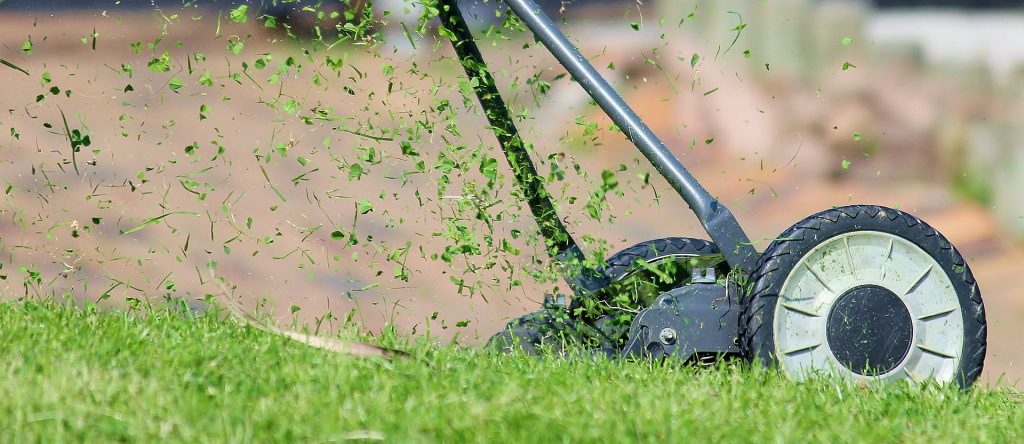
Among the lawn care community, there has been a longstanding question of what to do with grass clippings. Every time you mow your lawn, you create grass clipping. In the simplest sense, there are only two places your clippings can go: into a bag or back onto your lawn. However, the question gets more complicated, because even if you bag your clippings, you have to figure out what to do with them. Opinions vary on the best way to use your clippings, and whether to bag them at all. Ultimately, there is no one right answer. What you choose to do with grass clippings depends on your lawn, your needs, and your personal preferences.
![What to Do With Grass Clippings [infographic]](https://theturfgrassgroup.com//wp-content/uploads/2020/06/What-to-Do-With-Grass-Clippings-infographic.jpg)
Bagging Your Grass Clippings
One option is to bag your grass clippings. In some cases, a mower may require a bag. If that is the case, you don’t have much choice. Never try to remove the bag from a mower that is built for one. The result can be dangerous. However, even if the bag is optional on your mower, there are some good reasons to bag your clippings.
Bagging Grass Clippings: Pros
One of the benefits of bagging your clippings, and the primary reason many homeowners and groundskeepers do it, is that bagging your clippings makes a lawn look neater. That’s not to say that a lawn with grass clippings looks like a mess. As long as you mow regularly and keep the clippings small, a lawn with clippings still looks presentable. But if you want to maximize striping and get the neatest lawn possible, you need to bag your clippings. For example, almost all professional sports fields are done this way. Leaving clipping would make it harder to see striping and could interfere with gameplay.
Bagging Grass Clippings: Cons
So if it makes your lawn look neater, why not bag your clippings? There are a few reasons you might choose not to. One of the most basic reasons not to bag your clippings is that bagging is extra work. While the actual bagging process takes no extra effort—you just hook up a bag to your mower—once you have a bag or bags of clippings, you need to do something with them.
That’s why many lawn care services do not automatically bag grass clippings. Bagging clippings means that a lawn service has to fill a truck with the clippings it accumulates throughout the day. Sometimes this even requires an extra vehicle to follow the vehicle that carries the crew and equipment. And at the end of each day, the lawn care company has to find some way to dispose of all those clippings. Many lawn care companies will bag your clippings for an extra fee. Some companies bag all of their clippings, but the added cost is factored into their overall pricing.
Another reason not to bag your clippings is that grass clippings can actually benefit your lawn if you leave them where they fall. In the next section, we will go into more detail about that option.
Leaving Clippings on the Lawn
When deciding what to go with grass clippings, your options are essential to bag or not to bag. Of course, if you don’t bag, your clippings will end up all over your lawn. But that’s not necessarily a bad thing. There are many benefits to leaving grass clipping where they fall. Of course, not having to deal with bags full of clippings is a relief. But the benefits go far beyond that.
Do Grass Clippings Cause Thatch?
The first myth we need to dispel is the thatch myth. Many homeowners, and even some professionals, incorrectly assume that leaving clippings will contribute to thatch. However, thatch and grass clippings are not related.
Thatch is a layer of undecomposed organic material between the top of the soil and the actively growing vegetation. While too much thatch can cause problems, grass clippings do not contribute to that. Cut grass is made up of water and easily-decomposable organic material. Under normal circumstances, cut grass decomposes quickly and does not contribute to thatch.
The Benefits of Leaving Clippings
While there is no risk of thatch, there are many benefits to leaving grass clippings on your lawn. The most significant benefit of leaving grass clippings is that as they decompose, they recycle their nutrients.
As grass grows, it takes in various minerals that are necessary for its growth. When the grass is cut, those minerals are removed. If the grass is bagged, those minerals are lost forever. But if the grass is allowed to decompose, those minerals return to the soil.
Another benefit is that you don’t have to deal with bags of grass clippings. And this is more significant than just saving you some extra effort. Depending on what you do with your bagged grass clippings, you could be benefiting or harming the environment. According to waste management company Millennium Waste Inc., “Grass clippings and other yard waste make up 12% of solid waste in landfills throughout the United States. During peak seasons, that percentage can potentially increase up to 50%.”
When Not to Leave Clippings on the Lawn
Although it is often beneficial to leave grass clippings on your lawn, there are times when you should avoid leaving them.
We always recommend mowing when your grass is dry. But if you must mow when the grass is wet, bag your clippings. Wet grass clippings can clump together, and the clumps of cut grass can smother your turf.
Another time to bag your clippings is when your grass is contaminated. If your lawn is heavily infested with a disease, pest, or fungus, leaving clipping on the lawn can spread the infestation. Similarly, if you just applied an herbicide, you may want to collect your clippings. We generally recommend against mowing for at least three days after using any type of herbicide. Even then, it may be worth bagging your clippings on the first mow after a heavy application.
As lawn and turf experts, The Turfgrass Group highly encourages homeowners not to go too long between mowings. You should never cut off more than a third of the height of your grass. If your grass has grown long enough that cutting it to your desired length will cut more than a third, consider mowing in two passes. On the first pass, raise your mower blade, so you only cut off one-third of the height of the grass. After the grass has recuperated for a couple of days, lower the mower to its usual height, and make your second pass. However, if you need to cut more than a third of your grass’s height, bag your clippings. Long clippings can pile up and smother healthy turf.
When Leaving Clippings Affects Personal and Environmental Safety
If your clippings are landing outside your lawn, consider bagging them. If clippings are getting on your patio, deck, or walkways, they could be a slipping hazard. And if clippings are flying out into a neat bed of flowers or vegetables, bagging is a good option to avoid the mess.
It is also crucial to make sure your clippings stay out of gutters and storm drains. Many storm drains send water into streams and natural bodies of water. When too much vegetation is swept into those waterways, including grass clipping, it can pollute the water. As yard waste decomposes, it releases nitrogen, which can lead to algae blooms that suffocate a healthy waterway.
Healthy Lawns Start With Quality Turf
If you want a beautiful lawn, there is no question that properly dealing with your clippings helps, whether you bag or you don’t.
For that ultra-manicured, professional-sports-field look, you need to bag your clippings. There’s no way around it. You just have to figure out what to do with the grass clipping. If you can, compost or recycle them. There are many recycling centers that specialize in yard waste. Avoid sending clippings to a landfill, and never burn them.
If you want a more natural way to keep nutrients in your lawn, leave your clipping to decompose and recycle their minerals. As long as you keep your grass mowed, the small clippings won’t show too much, and you can naturally boost your turf. The result is a healthy green lawn that you can be proud of.
No matter what you do with your clippings, if you want a beautiful, thick, lush lawn, you need to start with the right turf. Growing turf is part science and part art. The Turfgrass Group sells turf that has been scientifically developed to withstand stress and grow thick and healthy. We know that your turf may sometimes not get everything it needs. Soil conditions, weather, and foot traffic can conspire to harm your turf. That’s why it’s important to use a turf that was developed to take a beating and grow lush and beautiful. You can find a grower for any of our turf grasses right here.
